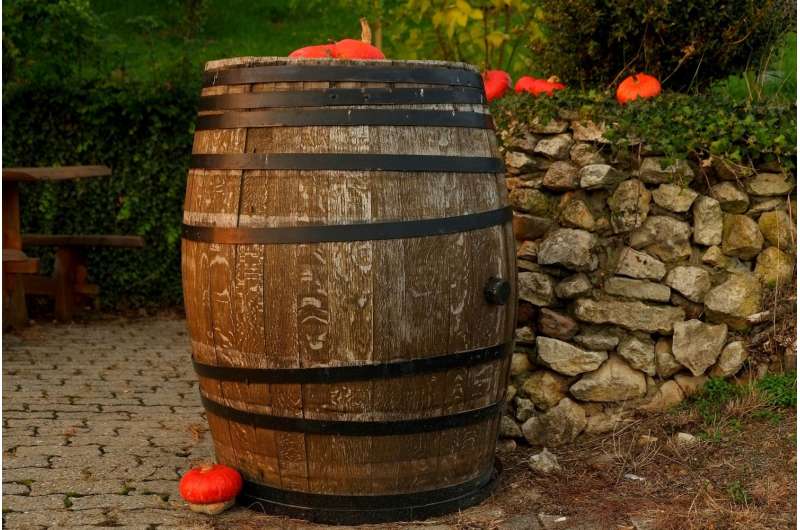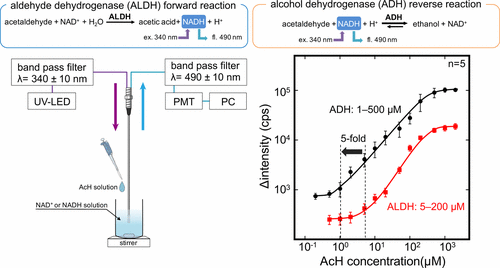Mulling over the aromas of wine

A fine wine has an ideal balance of ingredients. Too much or too little of a component could mean the difference between a wine with a sweet and fruity aroma and one that smells like wet newspaper. To help wineries avoid off-aromas, a team reports in ACS Sensors a sensitive device for detecting a compound that can affect the beverage's fragrance.
Acetaldehyde is frequently found in a lot of places and foods, such as fruits, vegetables and human saliva. When present in high amounts in wine, it produces an unpleasant odor and affects the fermentation process. Therefore, it is important for winemakers to monitor the acetaldehyde levels, which can vary with temperature, pH and oxygen concentrations. Current methods involve trained experts, long processing times and complex equipment. Kohji Mitsubayashi and colleagues propose a sensitive, versatile detector that is more selective than its predecessors.
The team tested for acetaldehyde in nine different wines, both red and white. The new detector produced results comparable to those obtained with traditional methods, but was simpler to operate and produced real-time results. The researchers say that the device could provide wineries with a more practical method for monitoring this make-or-break ingredient.

More information: Kenta Iitani et al. Improved Sensitivity of Acetaldehyde Biosensor by Detecting ADH Reverse Reaction-Mediated NADH Fluoro-Quenching for Wine Evaluation, ACS Sensors (2017). DOI: 10.1021/acssensors.7b00184
Abstract
Acetaldehyde (AcH) is found in ambient air, foods, and the living body. This toxic substance is also contained in wine and known as an important ingredient affecting the quality of wine. Herein, we constructed and evaluated two different fiber-optic biosensors for measurement of AcH in the liquid phase (AcH biosensor) using aldehyde dehydrogenase (ALDH) or alcohol dehydrogenase (ADH). The AcH biosensor measured a concentration of AcH using fluorescence intensity of a reduced form of nicotinamide adenine dinucleotide (NADH) that was produced or consumed via catalytic reaction of the respective enzyme. In the AcH measurement system, an ultraviolet light emitting diode (UV-LED) and photomultiplier tube (PMT) were connected to a bifurcated optical fiber and were used to excite and detect NADH. A sensing region was developed using an optical fiber probe and an enzyme-immobilized membrane, buffer pH, and concentrations of a coenzyme in buffer solution for ALDH forward reaction and ADH reverse reaction were optimized, and the dynamic ranges were compared. ADH-mediated AcH biosensor showed higher sensitivity, wider dynamic range (1–500 μM), and capability of rapid measurement (less than 3 min) than ALDH-mediated AcH biosensor (5–200 μM). ADH biosensor also presented a high selectivity and allowed measurement of AcH in 9 different wine samples (5 red and 4 white wines). The determined concentrations were comparable to those measured by NADH absorbance method, which validated the accuracy of the ADH biosensor in AcH measurement.
Provided by American Chemical Society




















